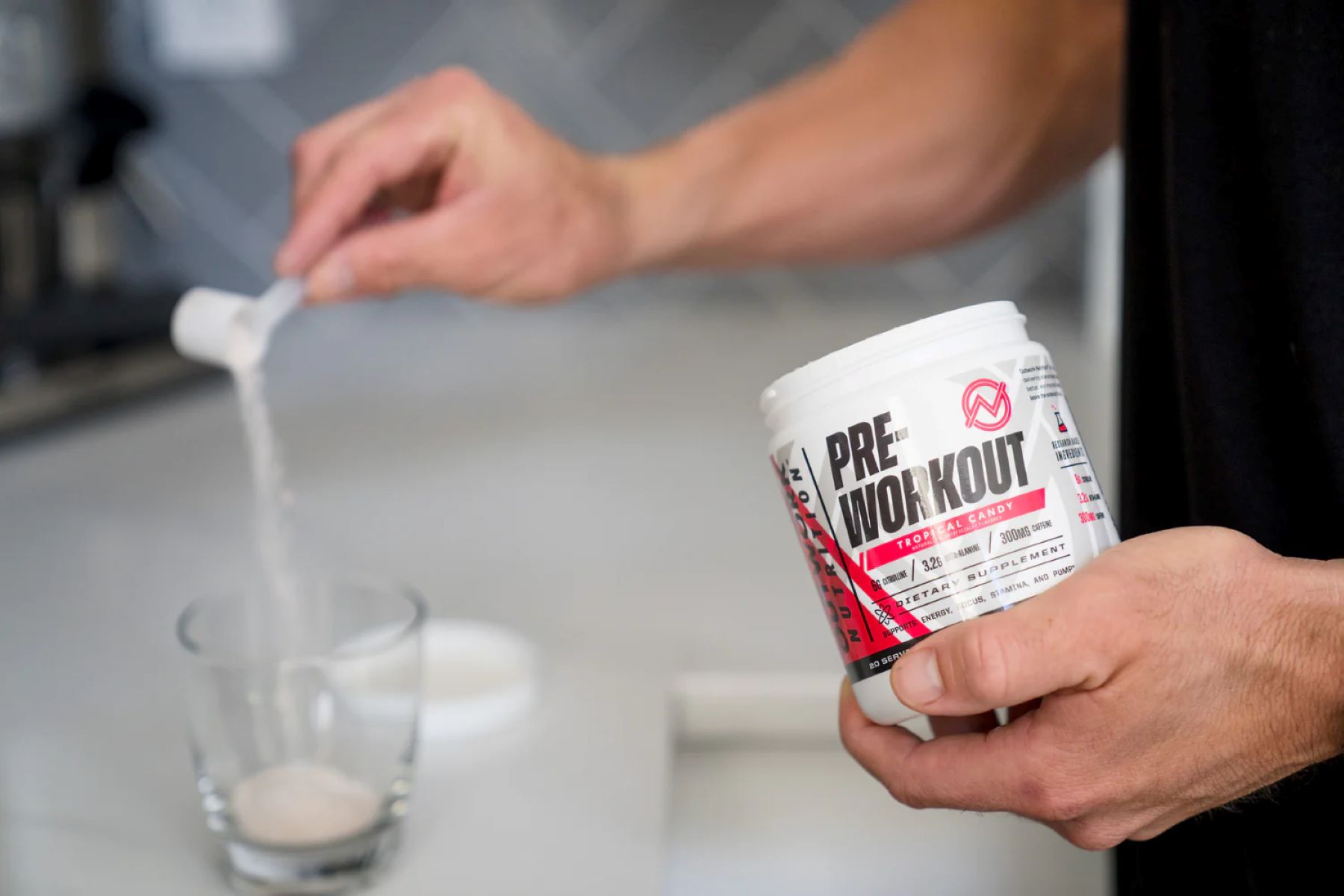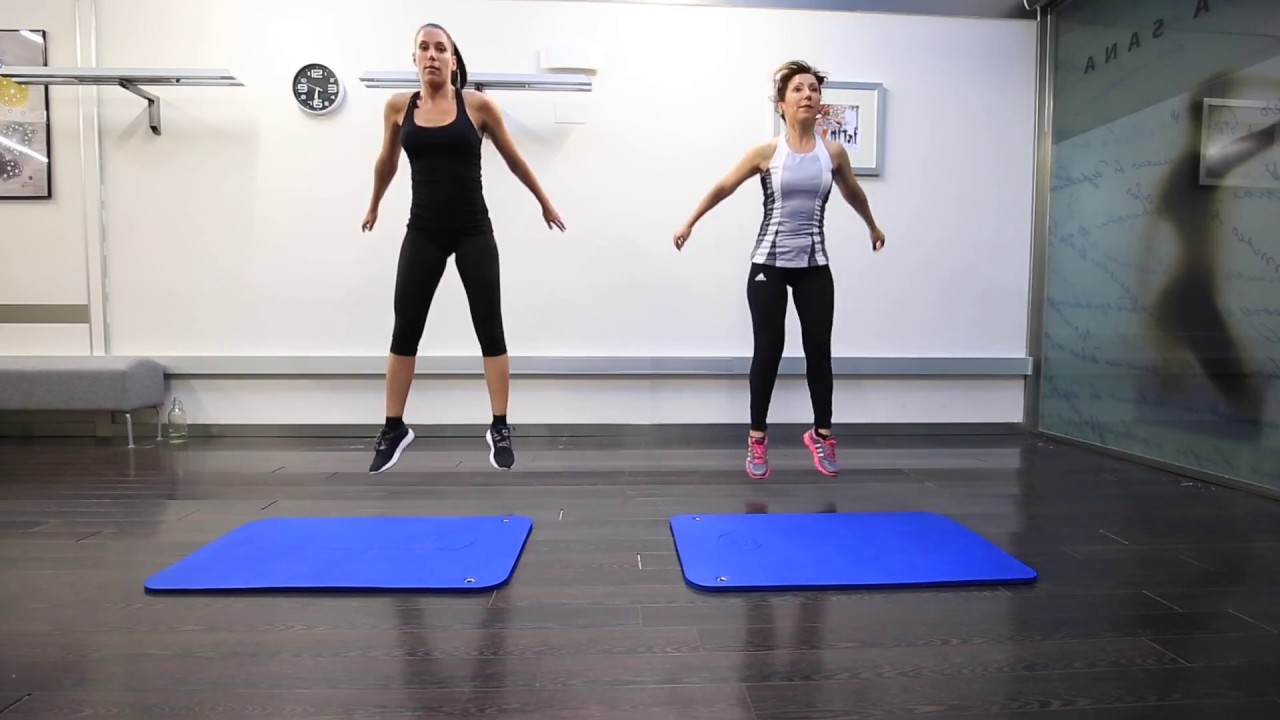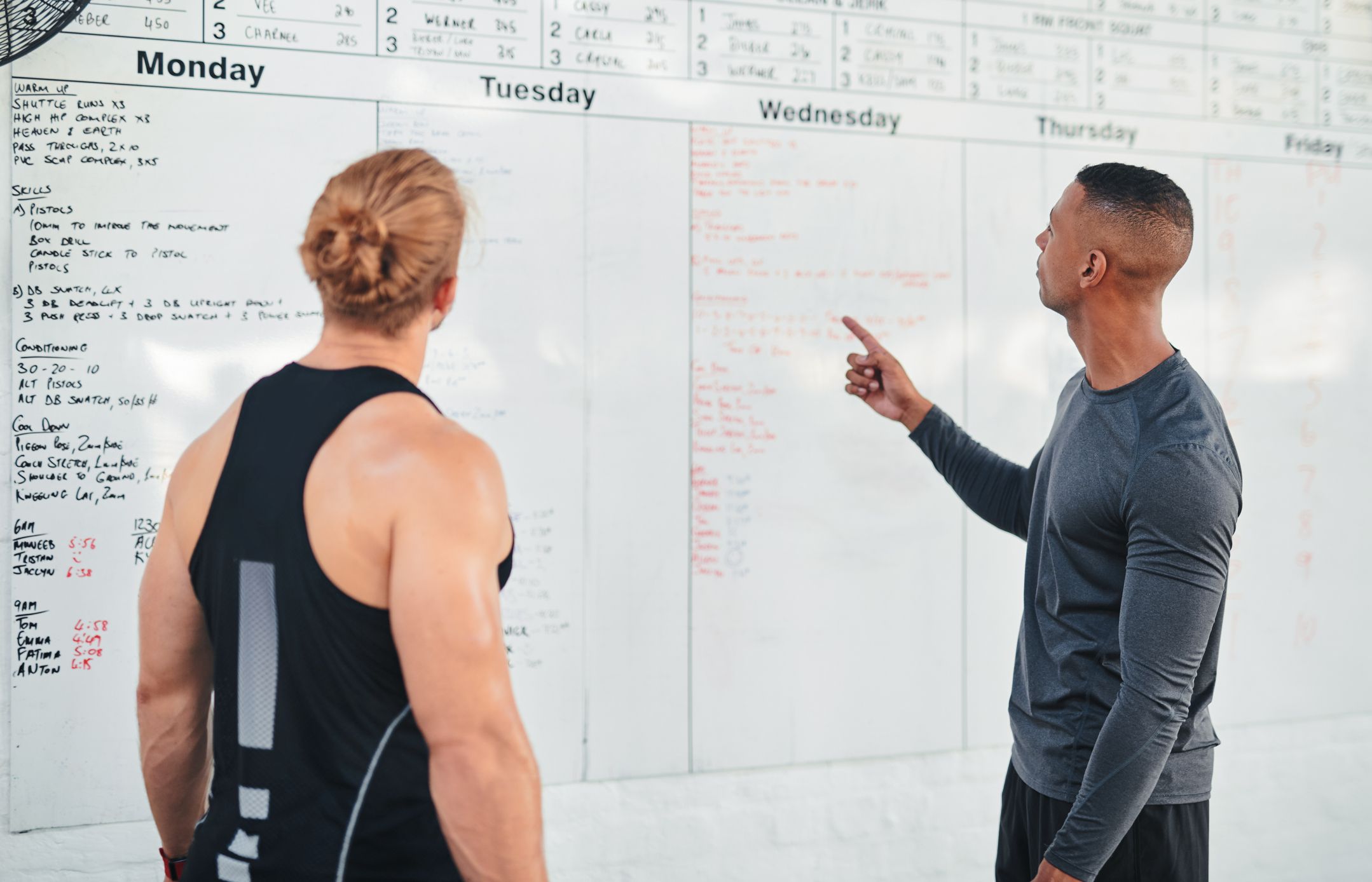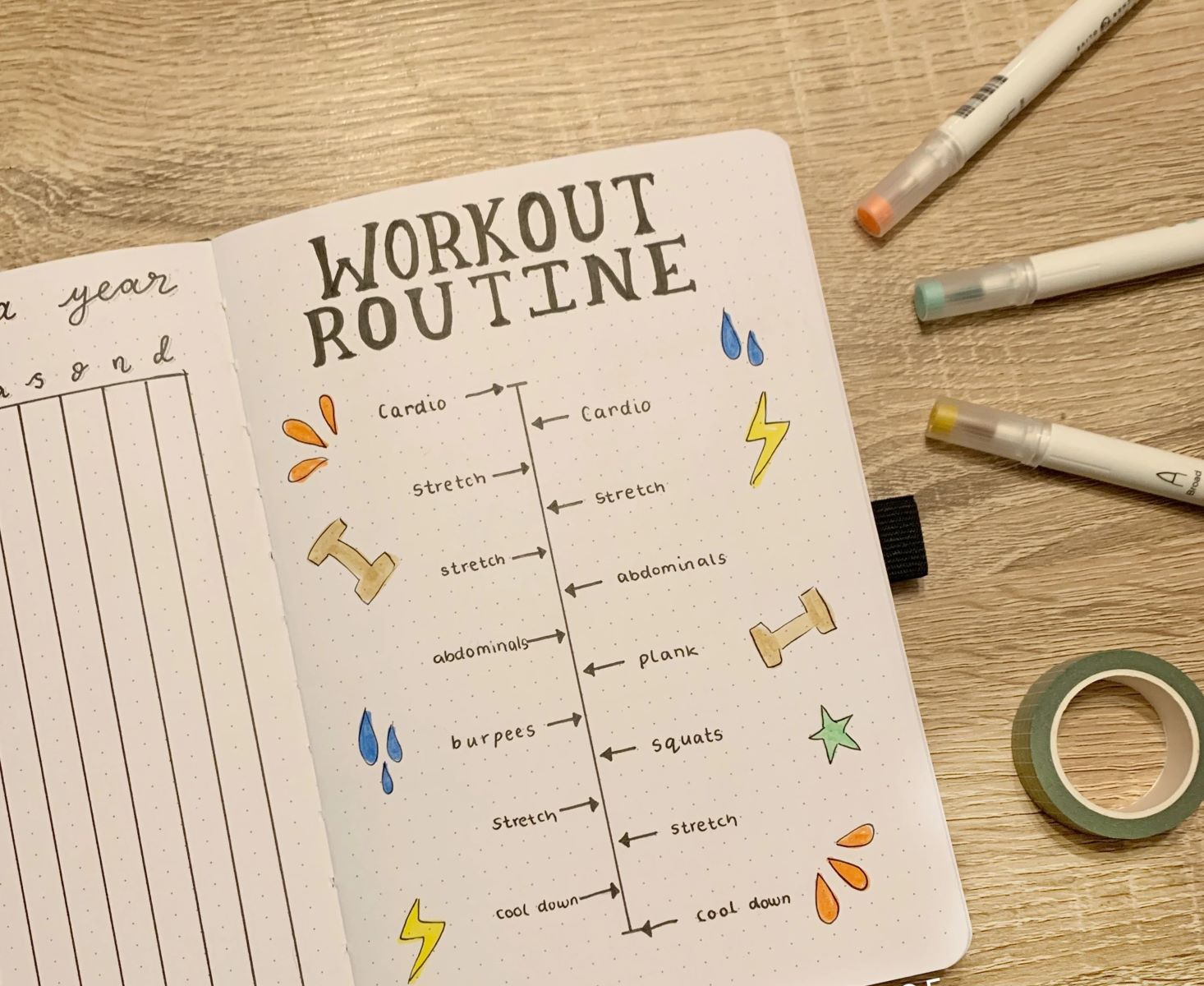Home>Misc>Featured>How Many Exercises Should You Do Per Workout


Featured
How Many Exercises Should You Do Per Workout
Modified: January 2, 2024
Discover the perfect balance of exercises for your workout routine. Find out how many exercises you should incorporate per workout to maximize your results. Featured tips for achieving your fitness goals.
Introduction
When it comes to designing a workout routine, one of the common questions that arises is: how many exercises should you do per workout? Finding the right balance is crucial to ensure that you’re getting an effective workout without overexerting yourself. The answer to this question can vary depending on multiple factors, including your goals, training level, time availability, exercise selection, training split, frequency, intensity, volume, and recovery.
In this article, we will explore these factors in detail to help you determine the ideal number of exercises to include in your workouts. Whether you’re a beginner looking to establish a foundation or an experienced fitness enthusiast striving for specific goals, understanding these considerations will guide you towards a well-rounded and tailored workout routine.
Before diving into the specifics, it’s important to remember that there is no one-size-fits-all answer to this question. Each individual’s needs and preferences are unique, and what works for one person may not work for another. Therefore, it’s crucial to assess your own circumstances and adjust your workout routine accordingly.
Now, let’s explore the key factors that should be taken into account when determining how many exercises you should do per workout.
Factors to Consider
When determining the number of exercises to include in your workout, it’s important to consider several factors that can impact your overall fitness journey. These factors include your goals, training level, time availability, exercise selection, training split, frequency, intensity, volume, and recovery.
Firstly, your goals play a vital role in defining the number of exercises you should incorporate into your workout routine. If your aim is to build overall strength and muscle, a higher number of exercises may be necessary, targeting different muscle groups. However, if your goal is to improve cardiovascular fitness or flexibility, a mix of exercises from various disciplines might be more beneficial.
Your training level is also crucial in determining the appropriate number of exercises. Beginners may benefit from starting with a smaller number of exercises to avoid feeling overwhelmed or risking injury. As your fitness level increases, you can gradually add more exercises to challenge your body and continue making progress.
Time availability is another important consideration. If you have limited time for each workout session, focusing on compound exercises that engage multiple muscle groups simultaneously can be an efficient approach. On the other hand, if you have more time to dedicate to your workouts, you can incorporate a larger variety of exercises to target specific areas or muscle groups.
The choice of exercises is also significant in shaping the number of exercises you should perform. Different exercises have different levels of complexity and target specific muscles. In general, a well-rounded workout routine should include a mix of compound exercises, isolation exercises, and functional movements to provide a balanced stimulus to your body.
Your training split refers to how you divide your workouts throughout the week. For example, a common split is to alternate between upper body and lower body workouts or focus on different muscle groups on different days. This division can impact the number of exercises you do per workout. If you have a full-body workout, you may need to prioritize exercises and select those that target multiple muscle groups.
The frequency of your workouts also plays a role. If you exercise several times a week, you may choose to perform fewer exercises per session to allow for adequate recovery. On the other hand, if you have fewer workouts in a week, you may need to incorporate more exercises to ensure you’re getting an adequate stimulus for each muscle group.
Intensity and volume are essential factors to consider. Higher intensity workouts, such as heavy lifting or high-intensity interval training (HIIT), may require fewer exercises to achieve the desired effect. Conversely, lower intensity workouts, like steady-state cardio or light resistance training, may allow for a larger number of exercises.
Finally, recovery and rest are crucial for allowing your body to repair and grow stronger. Overtraining can lead to fatigue, decreased performance, and increased risk of injury. Therefore, it’s important to listen to your body and make sure you’re allowing enough time for rest and recovery between workouts.
By taking into account these factors, you can determine the ideal number of exercises to include in your workouts. It’s important to remember that these considerations are not set in stone and can be adjusted based on your personal preferences, goals, and progress.
Goals and Training Level
When deciding how many exercises to include in your workout routine, it’s crucial to consider your fitness goals and training level. These factors will help determine the appropriate number of exercises to achieve the desired outcomes.
Your goals play a significant role in shaping your workout routine. If you’re aiming to build overall strength and muscle mass, including a higher number of exercises can be beneficial. Exercises that target different muscle groups such as squats, deadlifts, bench presses, and rows can help stimulate muscle growth and development.
On the other hand, if your goal is to improve cardiovascular fitness or enhance flexibility, you may incorporate a mix of exercises from different disciplines. This can include activities like running, swimming, cycling, yoga, or Pilates. These exercises can help improve cardiovascular endurance, flexibility, and overall functional mobility.
Your training level is another crucial factor to consider. Beginners may find it overwhelming to tackle a large number of exercises all at once. It’s advisable to start with a smaller number of exercises and gradually increase the intensity and volume as you build strength and confidence. This approach allows your body to adapt and reduce the risk of injury.
For intermediate and advanced trainers, a higher number of exercises can help challenge the body and continue making progress. However, it’s important to strike a balance to prevent overtraining. Including a mix of compound exercises that target multiple muscle groups, along with isolation exercises that focus on specific areas, can provide a well-rounded workout.
Ultimately, the number of exercises you incorporate into your routine should align with your goals and training level. It’s essential to remember that consistency and progression are key. As you become more experienced and progress in your fitness journey, you can gradually increase the complexity and intensity of your exercises to continue challenging your body.
It’s worth noting that individual preferences also come into play. Some individuals may prefer a higher number of exercises to keep their workouts varied and engaging, while others may prefer a more focused and streamlined approach with fewer exercises.
In the pursuit of your goals, it’s important to listen to your body and make adjustments as needed. Pay attention to any signs of overtraining, fatigue, or performance plateaus. Consulting with a qualified fitness professional can also provide guidance and help tailor an exercise program that aligns with your goals and training level.
Time Availability
One of the key factors that influence the number of exercises you should include in your workout routine is the amount of time you have available. Time availability is an important consideration as it affects the overall duration and composition of your workouts.
If you have limited time for each workout session, it may be more practical to focus on a smaller number of exercises that provide maximum impact. In this case, compound exercises that target multiple muscle groups simultaneously can be particularly effective. Examples include squats, lunges, push-ups, and pull-ups. These exercises allow you to work multiple muscles in one movement, saving you time while still providing an effective workout.
On the other hand, if you have more time to dedicate to your workouts, you have the flexibility to incorporate a larger variety of exercises. This can be beneficial for targeting specific muscle groups or working on different aspects of fitness such as strength, endurance, and flexibility.
It’s important to note that the duration of your workout sessions may vary depending on your goals, training level, and personal preferences. Some individuals may prefer shorter, more intense workouts, while others may enjoy longer, more leisurely sessions. Ultimately, the number of exercises you include should align with the time you have available without sacrificing the quality and effectiveness of your workouts.
Additionally, consider the frequency of your workouts. If you’re able to exercise multiple times per week, you may opt for shorter sessions with a focused selection of exercises. This allows for adequate recovery between workouts and prevents overtraining. On the other hand, if you have fewer workouts per week, you may choose to include more exercises in each session to ensure you’re getting a comprehensive and challenging workout.
When time is limited, efficiency is key. Plan your workouts in advance, focusing on exercises that provide the most bang for your buck. Circuit training or high-intensity interval workouts can also be efficient options, as they combine cardio and strength exercises, effectively utilizing your time and maximizing calorie burn.
Ultimately, finding the right balance between the number of exercises and the time you have available is crucial. It’s better to do a focused and effective workout with a smaller number of exercises than to rush through a larger number of exercises and compromise proper form and technique. Prioritize quality over quantity and make the most of the time you have for your workouts.
Exercise Selection
When determining the number of exercises to include in your workout, the selection of exercises plays a vital role. Choosing the right exercises ensures that you are targeting all major muscle groups and working towards your fitness goals.
A well-rounded workout routine typically includes a mix of compound exercises, isolation exercises, and functional movements. Compound exercises, such as squats, deadlifts, bench presses, and rows, involve multiple joints and engage multiple muscle groups simultaneously. These exercises are effective for building overall strength and muscle mass.
Isolation exercises, on the other hand, focus on specific muscle groups. Examples include bicep curls, tricep extensions, and calf raises. Incorporating isolation exercises allows you to target smaller muscles and helps create balance and symmetry in your physique.
Functional movements, also known as functional exercises, are exercises that mimic movements we perform in our daily lives. These exercises focus on improving flexibility, mobility, and stability. Examples of functional movements include lunges, planks, and stability ball exercises.
The number of exercises you include in your routine will depend on the variety and specificity of your goals. If your goal is to build overall strength and muscle mass, it’s advisable to include a larger number of compound exercises. On the other hand, if your goal is to improve cardiovascular fitness or flexibility, you may choose to incorporate a mix of exercises from different disciplines.
It’s important to note that the exercises you choose should be suitable for your current fitness level and abilities. If you’re a beginner, it’s advisable to start with simpler exercises that allow you to focus on proper form and technique. As you progress and gain more experience, you can gradually incorporate more complex exercises into your routine.
Variety is also essential in exercise selection to prevent boredom and monotony. Switching up your exercises regularly not only keeps your workouts interesting but also challenges your muscles in different ways. This can help prevent plateaus and stimulate continuous progress.
Additionally, consider any specific areas of your body you want to target and tailor your exercise selection accordingly. For example, if you’re looking to strengthen your core, incorporating exercises like planks, Russian twists, and bicycle crunches can be beneficial.
Lastly, listen to your body and choose exercises that you enjoy and feel comfortable performing. If an exercise causes pain or discomfort, it’s essential to modify or replace it with an alternative exercise that targets the same muscle group.
Incorporating a mix of compound exercises, isolation exercises, and functional movements will help ensure that you’re getting a well-rounded and effective workout. Experiment with different exercises, find what works best for you, and continuously challenge yourself to achieve your fitness goals.
Training Split
When considering how many exercises to include in your workout routine, it’s important to determine your training split. A training split refers to how you divide your workouts throughout the week and allocate focus to different muscle groups or training goals.
There are various training split options, and the right one for you will depend on your goals, training level, and personal preferences. Here are a few common training split approaches:
- Full Body: In a full-body training split, you target all major muscle groups in a single workout session. This involves including exercises that work different muscle groups within one workout. Full-body workouts are often performed two to three times a week, allowing for sufficient rest and recovery between sessions.
- Upper/Lower Split: An upper/lower split involves dividing your workouts into separate upper body and lower body sessions. This split allows you to focus on specific muscle groups in each workout while still providing adequate rest and recovery. For example, you might perform upper body exercises on certain days and lower body exercises on alternate days.
- Push/Pull/Legs: This split divides your workouts into pushing exercises (e.g., chest press, shoulder press), pulling exercises (e.g., rows, pull-ups), and leg exercises (e.g., squats, lunges). This approach ensures that different muscle groups are targeted in each workout and allows for balanced training.
- Body Part Split: A body part split involves dedicating specific workouts to individual muscle groups. For example, you might have a dedicated day for training chest, another day for back, and so on. This type of split is commonly used by bodybuilders who want to focus on specific muscle development and hypertrophy.
Choosing the right training split depends on your goals and training level. Beginners may benefit from starting with a full-body or upper/lower split to establish a solid foundation and allow for adequate rest and recovery between workouts. As your fitness level and experience increase, you can experiment with different splits to target specific muscle groups or training goals.
The number of exercises you include in each workout session will depend on the training split you choose. If you have a full-body workout, you may need to prioritize exercises and select those that target multiple muscle groups. On the other hand, if you have a specific day dedicated to a particular muscle group, you can include a larger number of exercises that focus on that area.
Ensure that you have sufficient rest days incorporated into your training split. Rest and recovery are crucial for muscle growth, strength development, and injury prevention. Avoid consecutive days of intense training and give your body time to repair and rebuild.
Remember, the key is to find a training split that suits your goals, aligns with your schedule, and allows for adequate recovery. Consult with a qualified fitness professional if you need guidance in selecting the right training split for you.
Frequency
When determining the number of exercises to include in your workouts, the frequency of your training sessions is an important factor to consider. Frequency refers to how often you exercise in a given week, and it plays a significant role in determining the number of exercises you should perform in each session.
The ideal workout frequency varies depending on your goals, training level, and recovery capacity. Here are some guidelines to help you determine the appropriate frequency for your workouts:
Beginners: If you’re new to exercise or getting back into fitness after a long break, it’s recommended to start with two to three workouts per week. This allows your body to adapt to the demands of exercise and minimizes the risk of overtraining or burnout. In each session, you can include a moderate number of exercises focusing on full-body or compound movements.
Intermediate: As you progress in your fitness journey, increasing your workout frequency to three to five days per week can be beneficial. This level of frequency allows for more targeted training of specific muscle groups and greater overall volume. You can include a variety of exercises, both compound and isolation, to achieve your goals.
Advanced: Advanced trainers can handle a higher training frequency of four to six workouts per week. This level of frequency is especially suitable for individuals who have specific goals like muscle development, strength gains, or athletic performance. The number of exercises per workout can be higher, as long as adequate rest and recovery are prioritized.
Adapting your training frequency to match your desired goals is essential. If your goal is to build strength and muscle mass, allowing a minimum of 48 hours of rest between workouts targeting the same muscle groups is recommended. This ensures optimal recovery and growth.
Alternatively, if your goal is to improve cardiovascular fitness or endurance, incorporating more frequent cardio sessions can be beneficial. These sessions may not require as many exercises per workout but rather focus on maintaining an elevated heart rate for an extended period.
It’s important to experiment and listen to your body when adjusting your training frequency. If you find that you’re consistently fatigued, experiencing decreased performance, or not recovering adequately between sessions, it may be a sign that you need to decrease your frequency or modify your exercise routine.
Conversely, if you’re progressing well and feel energized, you may consider increasing your training frequency gradually. However, be mindful not to exceed your body’s recovery capacity, as this can lead to overtraining and potential injuries.
Ultimately, finding the right training frequency involves a balance between training stimulus and recovery. It’s important to prioritize quality over quantity and give your body sufficient time to rest and repair between workouts.
Intensity and Volume
When considering the number of exercises to include in your workout routine, it’s crucial to balance the intensity and volume of your training. Intensity refers to the level of effort or difficulty of an exercise, while volume refers to the total amount of work performed in a given workout session.
The right balance of intensity and volume will depend on your goals, training level, and recovery capacity. Here are some key factors to consider:
Intensity: The intensity of your workouts plays a significant role in determining the number of exercises you should perform. Higher intensity workouts, such as heavy lifting, high-intensity interval training (HIIT), or explosive movements, require more effort and energy. These types of workouts may necessitate fewer exercises to achieve the desired effect.
On the other hand, lower intensity workouts, such as steady-state cardio or light resistance training, can accommodate a larger number of exercises. In these cases, you can focus on incorporating a variety of exercises to target different muscle groups and enhance overall endurance.
Volume: The volume of your workouts refers to the total amount of work performed, including the number of sets, reps, and exercises. It’s essential to find the right balance that allows for an effective workout without overexerting yourself or risking injury.
For beginners or those with limited exercise experience, starting with lower volume workouts and gradually increasing the workload over time can be beneficial. This gradual progression allows your body to adapt and minimizes the risk of excessive muscle soreness or fatigue.
Intermediate and advanced trainers typically have a higher tolerance for volume and can handle more exercises and sets within a workout. However, it’s important to guard against pushing too hard and risking overtraining. Incorporating adequate rest periods and listening to your body are crucial as you increase the volume of your training.
When combining intensity and volume, it’s crucial to prioritize proper form and technique. Performing exercises with correct form ensures that you’re targeting the intended muscle groups and reduces the risk of injury. As the intensity and volume increase, it becomes even more important to maintain proper form to avoid overexertion and strain on the body.
Periodizing your training can also help manage intensity and volume effectively. Periodization involves planning your workouts over specific periods of time, alternating between periods of higher intensity and lower intensity to optimize results and prevent burnout. This approach allows for variations in volume and intensity, ensuring progressive overload and adequate recovery.
Individual factors, such as age, training history, and recovery capacity, should also be taken into account when determining the appropriate intensity and volume. It’s important to listen to your body, monitor your energy levels, and make adjustments as needed to avoid overtraining or stagnant progress.
By maintaining a balance between intensity and volume, you can design workouts that challenge your body effectively while providing enough stimulus for growth and improvement.
Recovery and Rest
When deciding how many exercises to include in your workout routine, it’s crucial to prioritize recovery and rest. Allowing adequate time for your body to recover and repair is essential for optimizing performance, preventing overtraining, and reducing the risk of injury.
Here are some key considerations regarding recovery and rest:
Rest Days: Incorporating regular rest days into your workout schedule is vital. Rest days provide your body with the opportunity to recover and replenish energy stores. They also help prevent overuse injuries and allow for optimum muscle growth and repair.
The frequency of rest days varies based on your goals, training intensity, and recovery capacity. Beginners may require more frequent rest days to allow their bodies to adapt and recover, while advanced trainers may be able to handle more consecutive training days before needing rest.
Sleep: Adequate sleep plays a crucial role in the recovery process. During sleep, your body repairs tissue, regulates hormones, and replenishes energy stores. Aim for seven to nine hours of quality sleep each night to support optimal recovery and overall well-being.
Nutrition: Proper nutrition is key to supporting recovery. Ensure you’re consuming a well-balanced diet that includes a combination of protein, carbohydrates, and healthy fats. Protein is particularly important for muscle repair and growth. Additionally, staying adequately hydrated helps with overall recovery and performance.
Active Recovery: Active recovery refers to engaging in low-intensity activities on rest days. Light stretching, foam rolling, yoga, or leisurely walks can help improve blood flow, reduce muscle soreness, and promote recovery without placing additional stress on your body.
Recovery Strategies: Incorporating other recovery strategies into your routine can also be beneficial. This might include techniques like massage, contrast baths, cryotherapy, or using recovery tools such as foam rollers or compression boots. These strategies can help facilitate muscle recovery and reduce potential inflammation and soreness.
Listening to your body is crucial. If you’re consistently feeling fatigued, experiencing decreased performance, or noticing signs of overtraining such as irritability or difficulty sleeping, it may be an indication that you need more rest and recovery.
Remember, rest and recovery are just as important as the exercise itself. Pushing your body beyond its limits without allowing adequate time for rest can lead to diminished results, increased risk of injury, and mental burnout. Be patient and prioritize self-care to ensure long-term success and sustainability in your fitness journey.
Recommendations for Different Goals
When determining the number of exercises to include in your workout routine, it’s important to tailor your approach based on your specific fitness goals. Different goals require different training strategies. Here are some recommendations based on common fitness goals:
Goal: Building Strength and Muscle Mass: If your primary goal is to build overall strength and increase muscle mass, including a higher number of exercises can be beneficial. Focus on compound exercises that target multiple muscle groups, such as squats, deadlifts, bench presses, and military presses. Aim for three to five sets per exercise and select a weight that allows you to perform eight to 12 repetitions with proper form. Include a variety of exercises that target different muscle groups for a well-rounded program.
Goal: Fat Loss and Weight Management: If your goal is to burn fat and improve body composition, a combination of resistance training and cardiovascular exercises is recommended. Include a moderate number of compound exercises to maintain muscle mass and focus on interval training or high-intensity cardio sessions to maximize calorie burn. Aim to perform three to four sets per exercise with 10 to 15 repetitions. Incorporate exercises that target both upper and lower body muscles to increase overall energy expenditure.
Goal: Improving Cardiovascular Fitness: If your primary focus is on improving cardiovascular fitness, the number of exercises may vary depending on the type of cardio activity you choose. For activities like running, cycling, or swimming, you may include a smaller number of exercises per session or even focus solely on the specific cardiovascular activity. Aim for longer duration sessions and gradually increase the intensity and distance covered to challenge your cardiovascular system.
Goal: Enhancing Flexibility and Mobility: For those looking to improve flexibility and mobility, a combination of stretching exercises, yoga, and mobility drills is recommended. As flexibility exercises don’t typically require a high number of repetitions, you can include more exercises in your routine. Focus on static stretches, dynamic stretches, and exercises that target specific muscle groups or joints. Aim to hold stretches for 15 to 30 seconds and repeat them two to three times.
Goal: Sports-Specific Training: If your goal is to enhance your performance in a specific sport, your exercise selection should be tailored accordingly. Identify the specific movements and muscle groups involved in your chosen sport and incorporate exercises that mimic those movements. Combine strength training, plyometrics, and sport-specific drills to improve overall athletic performance.
Remember, these recommendations are general guidelines, and adjustments may be necessary based on individual factors such as fitness level, training history, and preferences. It’s always beneficial to consult with a qualified fitness professional who can provide personalized recommendations based on your goals and circumstances.
Regardless of your specific goal, consistency and progression are key. Gradually increase the intensity, volume, and complexity of your exercise routine over time to continue challenging your body and promoting continuous improvements. Stay motivated and enjoy the journey towards achieving your fitness goals.
Conclusion
When it comes to determining the number of exercises to include in your workout routine, there is no one-size-fits-all answer. The ideal number of exercises varies based on several factors, including your goals, training level, time availability, exercise selection, training split, frequency, intensity, volume, and recovery.
Consider your goals and training level to determine the appropriate number of exercises. Beginners may start with a modest number of exercises and gradually increase intensity and volume over time. Intermediate and advanced trainers can handle a higher workload but should be mindful of overtraining.
Time availability is another crucial factor. If you have limited time, focus on compound exercises that provide maximum impact. If you have more time, you can incorporate a larger variety of exercises to target specific areas or muscle groups.
Exercise selection is vital to ensure a well-rounded workout. Include a mix of compound exercises, isolation exercises, and functional movements to target various muscle groups and improve overall fitness.
Training split and frequency should align with your goals and allow for sufficient rest and recovery. Choose a training split that suits your needs and adjust the frequency based on your training level and recovery capacity.
Consider the intensity and volume of your workouts, balancing the level of effort and total work performed. Gradually increase both aspects while maintaining proper form and technique.
Recovery and rest are just as important as the exercises themselves. Incorporate rest days, prioritize sufficient sleep, and consume a balanced diet to support optimal recovery and performance.
Lastly, tailor your exercise routine based on your specific goals. Whether you’re aiming to build strength, lose weight, improve cardiovascular fitness, enhance flexibility, or excel in a sport, adjust the number of exercises accordingly.
Remember that everyone is unique, and what works for one person may not work for another. Listen to your body, make adjustments as needed, and seek guidance from qualified fitness professionals. Design a workout routine that challenges you, keeps you motivated, and brings you closer to achieving your desired fitness outcomes.









